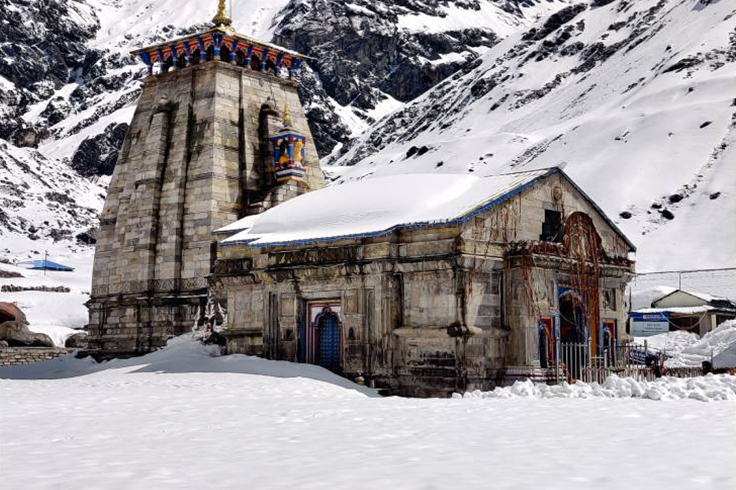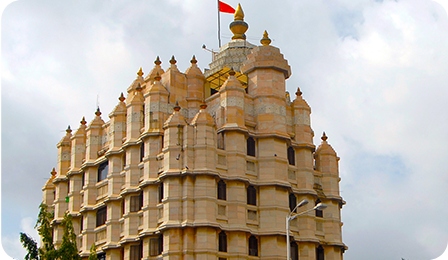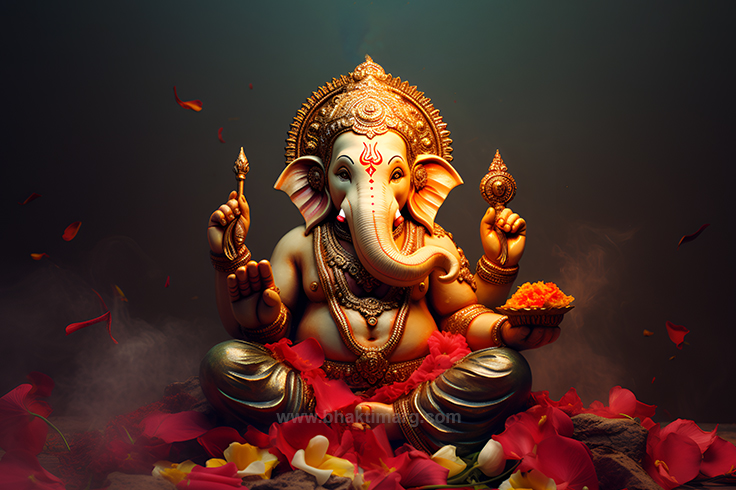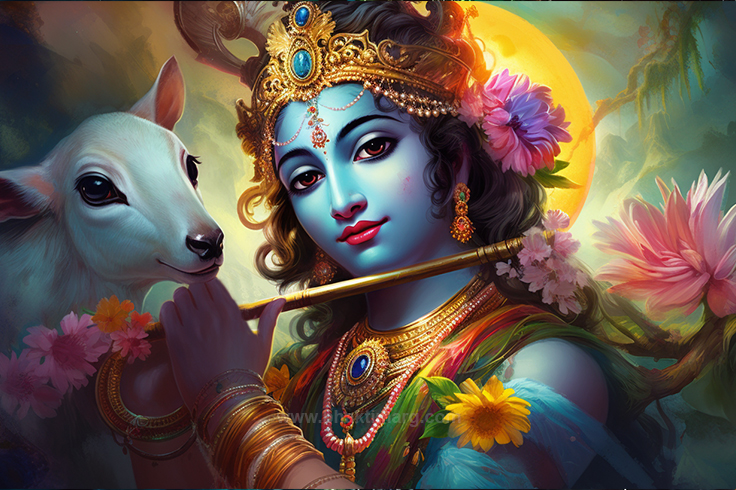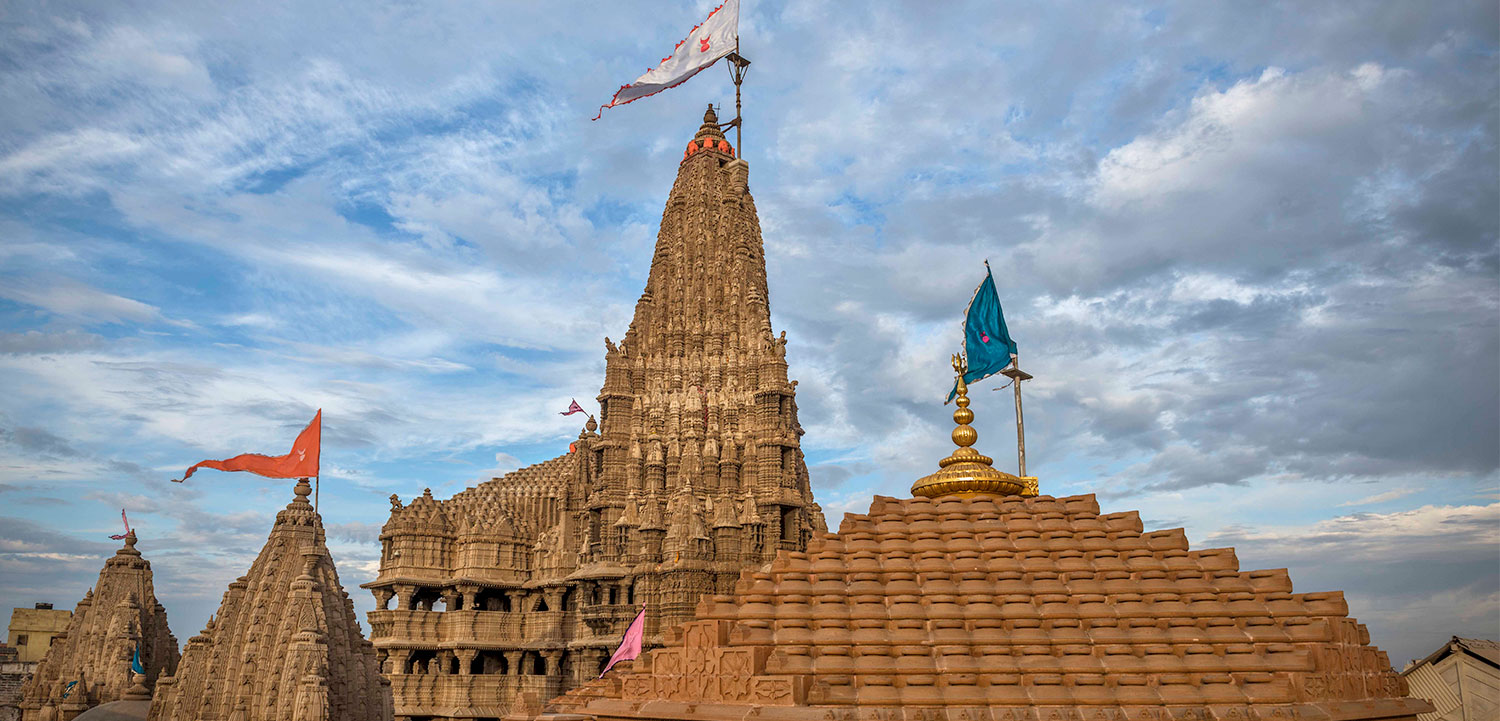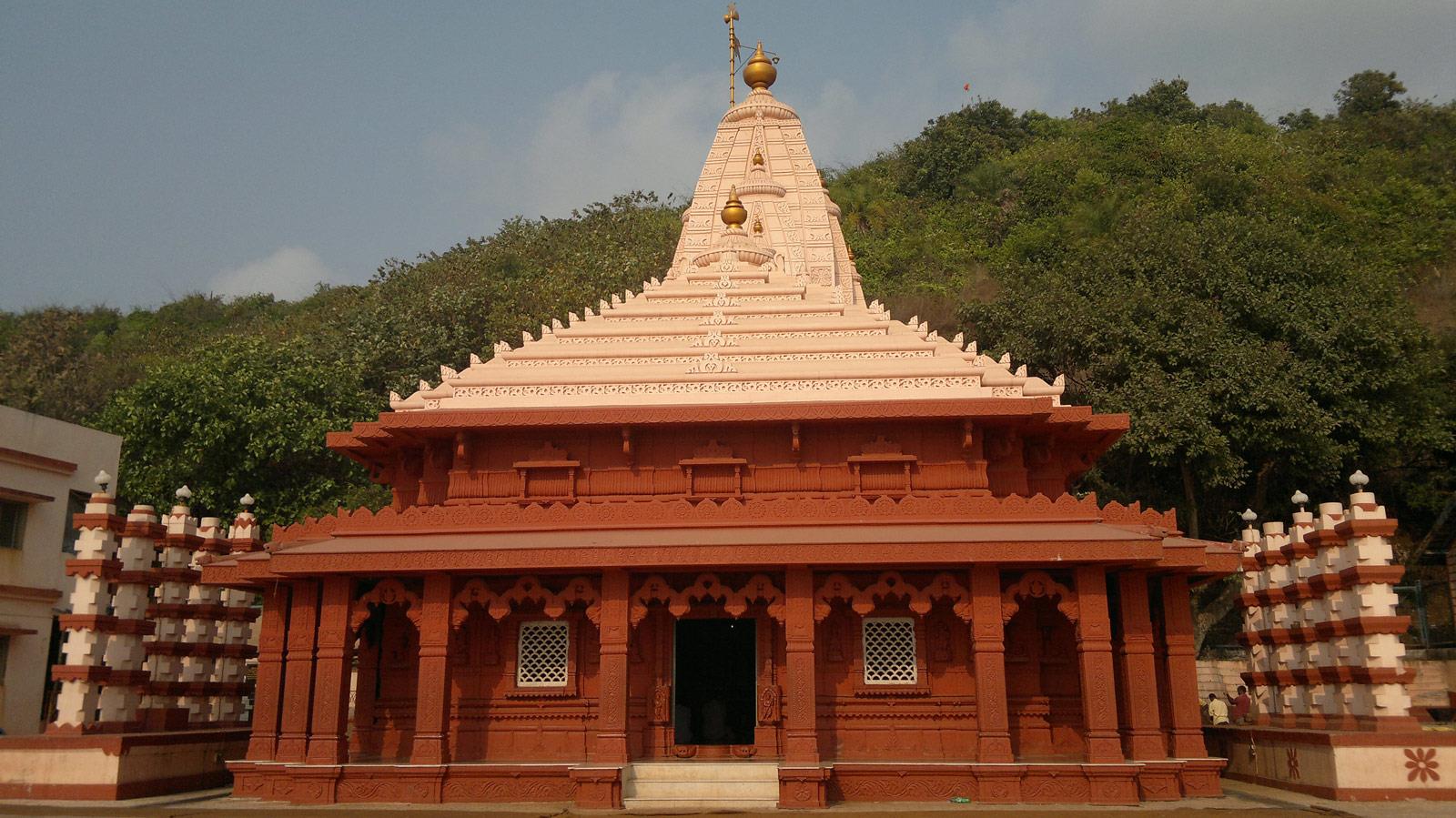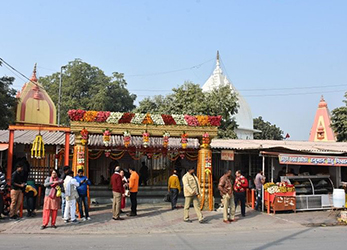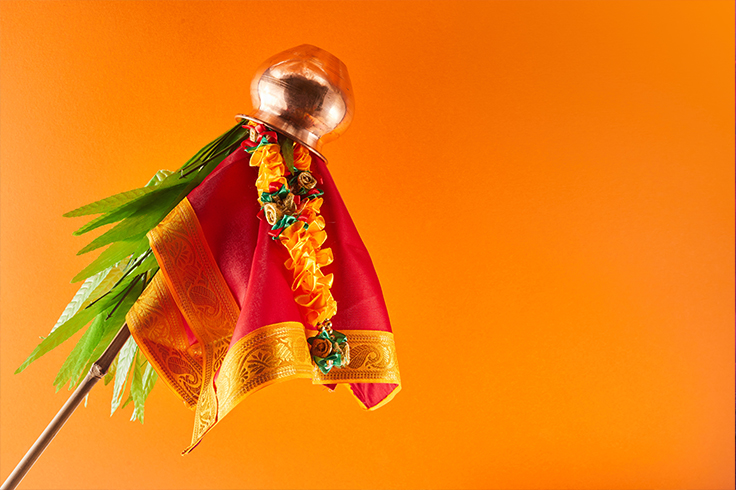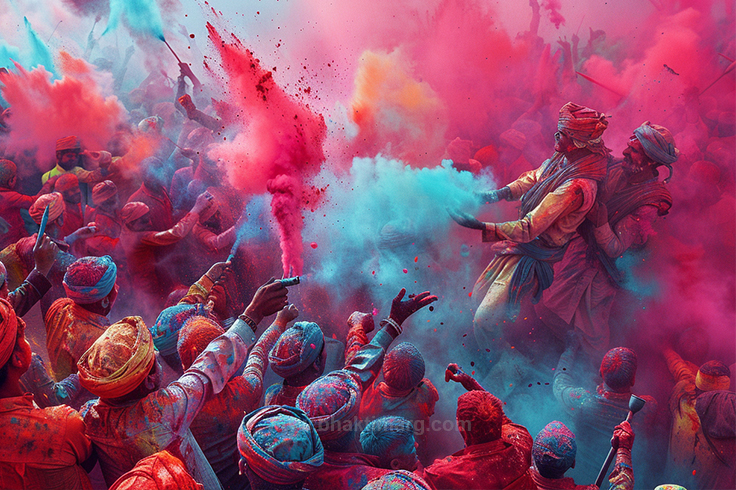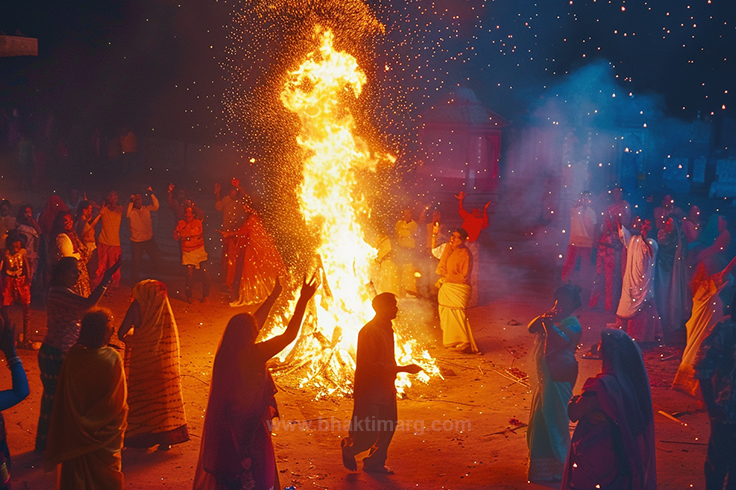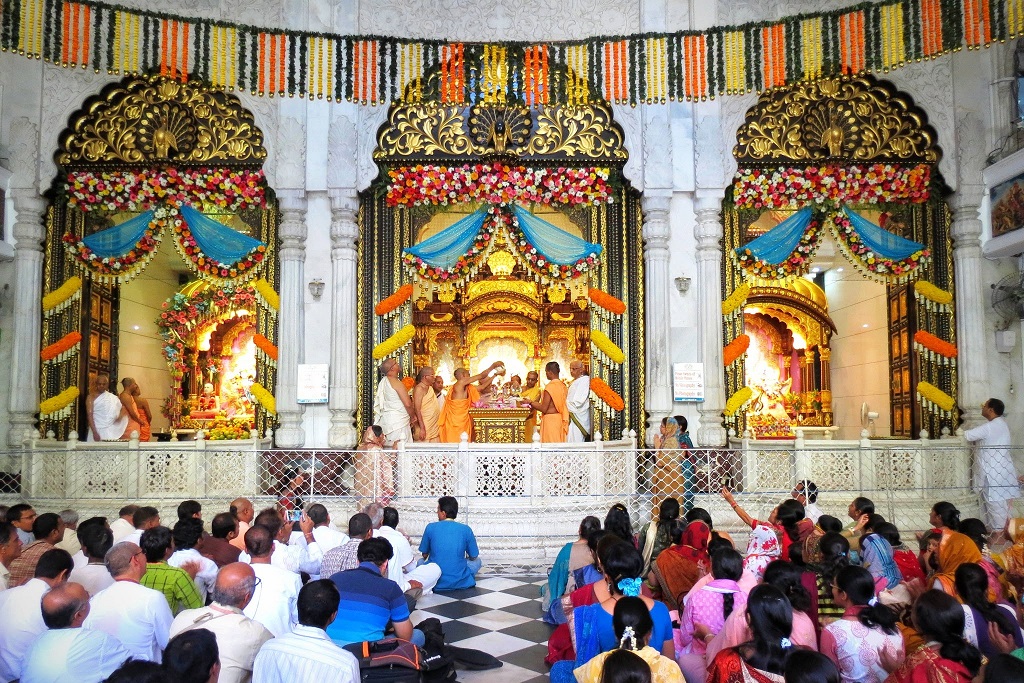
ISKCON Temple, Mumbai
The Sri Sri Radha Rasabihari ISKCON temple in Mumbai is another important temple within the International Society for Krishna Consciousness (ISKCON) organization. Also, commonly known as the ISKCON Juhu Temple as it is in the Juhu area of Mumbai, it is one of the iconic and well-known temples associated with the Hare Krishna movement. The ISKCON mandir is dedicated to Lord Krishna and His divine consort, Radha. It is named “Radha Rasabihari,” signifying the loving interactions between Lord Krishna and Radha, as depicted in Hindu scriptures and mythology. Sri Sri Sita Rama Laxman Hanuman also finds a prominent place.
The temple complex is a place of worship and a cultural center, engaging in various spiritual, educational, and community service activities. It has beautifully crafted idols of Lord Krishna and Radha and is designed to provide a serene and devotional atmosphere for visitors and devotees.
The Sri Sri Radha Rasabihari ISKCON Temple in Mumbai conducts regular congregational prayers, chanting of the Hare Krishna mantra, discourses on spiritual teachings, and festivals celebrating important occasions in Hinduism and the Hare Krishna tradition. This temple like other ISKCON centers also emphasizes community engagement and service. It often organizes social initiatives, educational programs, and charitable activities to promote spiritual values and help those in need.
How Did the ISKCON Temple come into being
His Divine Grace A.C. Bhaktivedanta Swami Prabhupada is ISKCON’s founder. Swami Prabhupada had a vision of spreading the teachings of Bhagavad Gita and the practice of Bhakti Yoga (the yoga of devotion) to the world. He traveled from India to the United States in 1965 and established ISKCON in New York to pursue this vision.
Swami Prabhupada returned to India in 1970 after successfully spreading the movement in the West. He wanted to establish Krishna consciousness in his home country after successfully spreading the movement in the West. He recognized the significance of Mumbai (then Bombay) as a major cultural and spiritual center, and he envisioned establishing a grand ISKON mandir there to propagate the teachings of Lord Krishna.
In the early 1970s, Swami Prabhupada acquired a prime piece of land near Juhu Beach in Mumbai for building an ISKCON mandir. The location was selected due to its accessibility, proximity to the beach, and the potential to attract locals and tourists. The construction of the ISKON temple began in the mid-1970s. Swami Prabhupada laid the foundation stone on December 31, 1975.
The ISKCON Radha Krishna temple’s architecture is inspired by traditional Indian temple design, and it features intricate carvings and a distinct spiritual ambiance. The stunning marble and sandstone structure, adorned with intricate carvings and detailed artisanship, quickly became a landmark in the city. The architecture aimed to capture the spiritual essence of the Bhakti tradition while also reflecting the culture of Mumbai. The temple is dedicated to Sri Sri Radha Rasabihari, the combined forms of Lord Krishna and His consort Radha. The installation of the deities at ISKCON temple Radha Krishna happened on April 14, 1987, with grand celebrations and rituals.
The ISKCON temple has become a hub for spiritual and cultural activities. It hosts daily worship services, kirtans, lectures, and festivals. The temple also provides educational programs, seminars, and charitable initiatives. The temple celebrates major Hindu festivals like Janmashtami (Lord Krishna’s birth anniversary), Gaura Purnima (the appearance day of Chaitanya Mahaprabhu), and Radhastami (Radha’s appearance day), among others. These celebrations attract devotees and visitors from all around.
The ISKON mandir is a testament to Swami Prabhupada’s vision and tireless efforts to promote Bhakti Yoga and the teachings of Lord Krishna. It has become an iconic landmark in Mumbai, known for its spiritual vibrancy, cultural contributions, and commitment to serving the community.
Architectural essence of Iskcon Temple Mumbai
The Sri Sri Radha Rasabihari Temple is renowned for its exquisite architecture that blends traditional Indian temple design with modern elements. The main ISKCON temple construction and architectural details reflect the devotion and artistic artisanship that went into creating this spiritual haven.
The architecture is inspired by ancient Indian temple designs, particularly those of North India. It features the distinctive characteristics of Indian temple architecture, including spires, domes, intricate carvings, and a symmetrical layout. The construction of the temple used traditional materials such as stone, marble, and wood. These materials lend a sense of authenticity and also contribute to the structure’s longevity.
The ISKCON mandir features impressive gopurams (towering entrance gateways) adorned with intricate carvings of divine beings, mythical creatures, and scenes from Hindu epics. These gopurams are reminiscent of South Indian temple architecture. The temple’s central feature is its main dome, surrounded by smaller domes and spires that contribute to its aesthetic appeal. The central spire (shikhara) rises gracefully above the main hall. The spires are adorned with sculptures and decorative elements that depict various aspects of Hindu mythology and culture.
The ISKCON main temple hall is the central and most prominent structure, housing the main deities, Sri Sri Radha Rasabihari (Lord Krishna and Radha). The hall features high ceilings and ornate decorations. Ornate decorations, floral motifs, and intricate detailing adorn the altar. The temple complex includes spacious mandapas (assembly halls) where devotees can gather for prayers and kirtans. These hallways are adorned with intricate carvings and are supported by intricately carved pillars that showcase various motifs and designs.
The ISKCON Radha Krishna temple is renowned for its elaborate stone carvings that depict scenes from Hindu epics, mythology, and the life of Lord Krishna. These carvings are found on pillars, walls, and around the entrances. The temple walls often feature vibrant frescoes and paintings depicting stories from Hindu scriptures and the life of Lord Krishna.
The temple complex includes well-maintained gardens and landscaped areas that contribute to the serene and peaceful ambiance of the temple. These gardens provide a space for devotees to relax, meditate, and engage in devotional activities.
The Sri Sri Radha Rasabihari ISKCON Temple complex includes a well-appointed auditorium. Additionally, the complex houses a goshala (cow sanctuary), a vegetarian restaurant, guest accommodations, and a gift shop.
The ISKCON Temple in Mumbai is a remarkable fusion of architectural beauty, spiritual significance, and cultural vibrancy. Its construction reflects the dedication of its creators to create a space that inspires devotion, introspection, and a deep connection with the divine.
What is the Significance Of Iskcon Temple in Bhakti Marg
The Sri Sri Radha Rasabihari ISKCON Temple in Mumbai holds significant religious, cultural, and spiritual importance, according to Bhakti Marg:
- The ISKCON temple place serves as a spiritual sanctuary for devotees and seekers who wish to deepen their connection with Lord Krishna and engage in Bhakti Yoga. It provides a serene and peaceful environment for meditation, worship, and devotional activities.
- The temple is dedicated to preserving and showcasing the rich cultural heritage of India. It organizes cultural events, music concerts, dance performances, and exhibitions highlighting traditional art forms, fostering an appreciation for Indian culture.
- It hosts lectures, seminars, and workshops on Vedic philosophy, providing spiritual education.
- The temple is renowned for its grand celebrations of Hindu festivals, particularly Janmashtami, which
- commemorates the birth of Lord Krishna. These festivals attract large crowds and create a vibrant atmosphere of devotion, celebration, and spiritual joy. During these festivals, the timing of the ISKCON temple is often extended.
- The temple is actively involved in various community service initiatives. It provides free meals to the underprivileged through its food distribution programs and engages in charitable activities that uplift and support the local community.
- The ISKCON movement, of which the temple is a part, has a worldwide presence. As a result, the Sri Sri Radha Rasabihari Temple in Mumbai links the local community and the global network of ISKCON centers, fostering connections and collaborations.
- As mentioned the temple’s stunning architecture combines traditional Indian temple design with modern aesthetics. Its intricate carvings, towering spires, and ornate decorations make it a visual masterpiece that captures the visitors’ attention. The temple’s location near Juhu Beach, its architectural beauty, cultural offerings, and extended timing of ISKCON temple make it a popular destination for tourists seeking a taste of spiritual and cultural experiences.
The Sri Sri Radha Rasabihari ISKCON Temple in Mumbai is famous for its spiritual significance, cultural contributions, architectural beauty, and the comprehensive approach it takes to promote spiritual awareness, cultural values, and community service. The ISKCON mandir Hare Krishna is a beacon of devotion, education, and social engagement, drawing individuals from diverse backgrounds to experience its transformative atmosphere.
Darshan Timing & Festival
Open Close Timing : |
Morning: 4:30am - 1:00pm | Evening: 4:00pm - 9:00pm |
Festivals : |
Janmashtami, Rath Yatra, Diwali, Holi |
Temple Information
Basic Services : |
Prasad, Mahaprasad, Sitting Area, Worship Space, Music Kirtan, Books, Food Stalls, Souvenir Stall, Education, Arts, Food Relief Programs, Eco Village, E-Services, Online Library |
Organized By : |
International Society of Krishna Consciousness |
Dedicated To : |
Shri Krishna |
Architecture : |
Non-Vedic and Classic Indian with a touch of modern elements |
Photography : |
Allowed |
Entry Fee : |
N/A |
How to Reach
Address : |
ISKCON®, Hare Krishna Land, Sri Mukteshwar Devalaya Rd, Marg, Sainath Nagar, MHADA Colony, Juhu, Mumbai, Maharashtra 400049. |
Roads : |
The nearest bus depot to the temple is the JVPD bus depot about 1 km away. Tourists can board buses from different parts of the city to reach this bus depot. |
Nearest Railway : |
Mumbai Central Railway Station is approximately 25 km (1 hour 17 minutes) and Chhatrapati Shivaji Terminus (1 hour) is approximately 22 km away from ISKCON Mumbai. The nearest local train stations in Juhu are Andheri West and Vile Parle West. Taxis and auto-rickshaws are frequent from these stations to Juhu. |
Nearest Airport : |
The distance between ISKCON Temple Mumbai and Chhatrapati Shivaji International Airport and ISKCON Juhu is about 6 km. Prepaid cabs and taxis are easily available from the airport to the temple, and it takes about 25 minutes to cover this distance. The Mumbai domestic airport is also a short distance from here. |
Website : |
https://www.iskcon.org/ |
Social Media : |
Facebook, Instagram, Twitter, YouTube |



